Worried about your database crashing again?
Slow queries and unexpected outages can derail your team. They damage user trust and put your service level agreements (SLAs) at risk.
The real challenge is pinpointing the root cause before it impacts your customers. Without the right visibility, your team is always just reacting to problems.
You’re not alone in this struggle. The Uptime Institute found that 53% of data center operators experienced outages in the last three years. This shows how critical proactive monitoring truly is.
While this guide focuses on databases, a comprehensive approach often includes broader application performance monitoring as well.
A great tool helps you get ahead of performance issues, moving from reactive fire-fighting to proactive optimization and resource management.
In this guide, I’ll walk you through the best database monitoring tools that offer granular insights to help you cut downtime and boost performance.
You’ll find solutions that automate anomaly detection, optimize resource use, and ensure you consistently meet those critical service level agreements.
Let’s dive in.
Quick Summary:
| # | Software | Rating | Best For |
|---|---|---|---|
| 1 | ManageEngine → | Enterprise IT teams | |
| 2 | Site24x7 → | SaaS IT directors | |
| 3 | Dynatrace → | Mid-sized SaaS companies | |
| 4 | Redgate Software → | IT directors & DevOps | |
| 5 | Quest → | Hybrid cloud IT teams |
1. ManageEngine
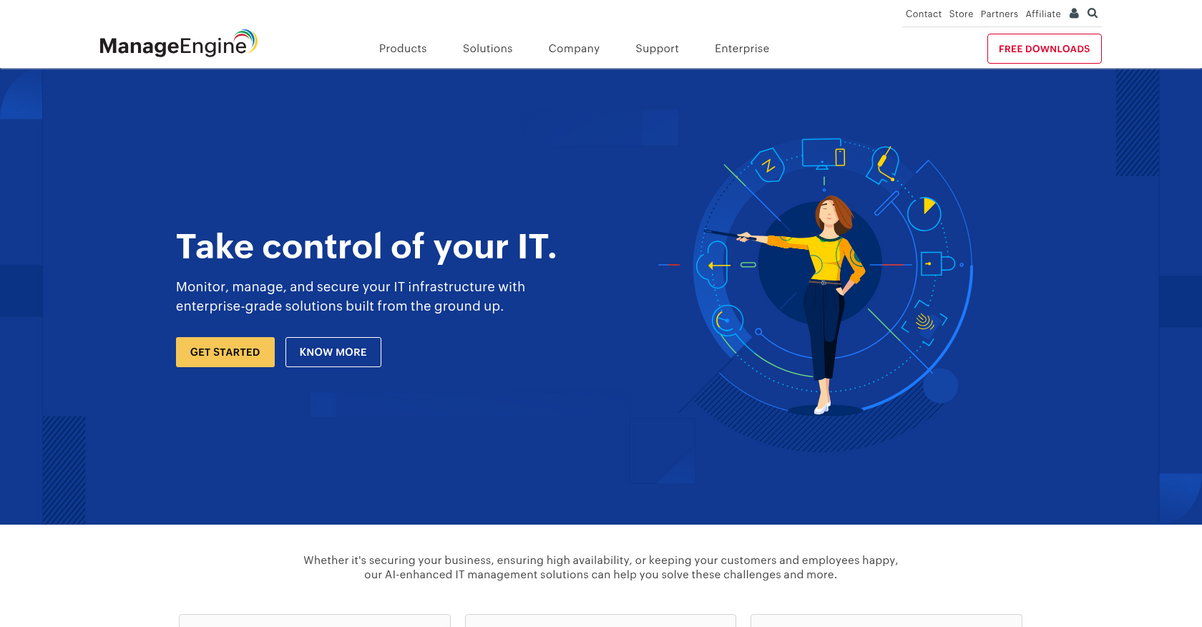
Is your database performance costing you sleep?
ManageEngine offers robust IT Operations Management and Observability solutions that monitor and manage your network, servers, and applications. This means you can keep your databases running smoothly.
When you’re dealing with the complexity of hybrid cloud environments, gaining actionable insights into IT operations is critical to avoiding downtime. The software helps you ensure high availability and keep your customers happy.
Here’s how to gain control.
ManageEngine’s IT Operations Management provides observability and AIOps capabilities to effectively monitor your applications and infrastructure. This enables proactive detection of anomalies.
You can also leverage Advanced IT Analytics with AI-powered insights and IT data correlation, providing unified IT analytics for capacity planning and troubleshooting. The result is reduced database downtime.
Additionally, ManageEngine offers Cloud Solutions for Enterprise IT, making it cloud-ready and cloud-native to scale your IT and support multi-cloud and hybrid infrastructures. This ensures your modernization initiatives align with evolving cloud adoption without compromising current workflows.
Take control of your IT.
Speaking of gaining insights, my guide on best marketing analytics tools offers more ways to optimize business performance.
Key features:
- IT Operations Management & Observability: Monitor and manage networks, servers, and applications, ensuring high availability and proactive issue resolution in complex IT environments.
- Advanced IT Analytics: Visualize IT data and gain actionable AI-powered insights, with IT data correlation and capacity planning to optimize resource utilization and prevent issues.
- Cloud Solutions for Enterprise IT: Scale your IT to support multi-cloud and hybrid infrastructures, providing cloud-ready and cloud-native capabilities for flexible deployment.
Learn more about ManageEngine features, pricing, & alternatives →
Verdict: ManageEngine stands out as one of the best database monitoring tools for IT directors and DevOps engineers. Its AI-enhanced IT management and robust observability features, along with advanced IT analytics for capacity planning, directly address pain points like managing hybrid environments and ensuring granular query performance monitoring, as seen in Certis Europe’s success with uptime.
2. Site24x7
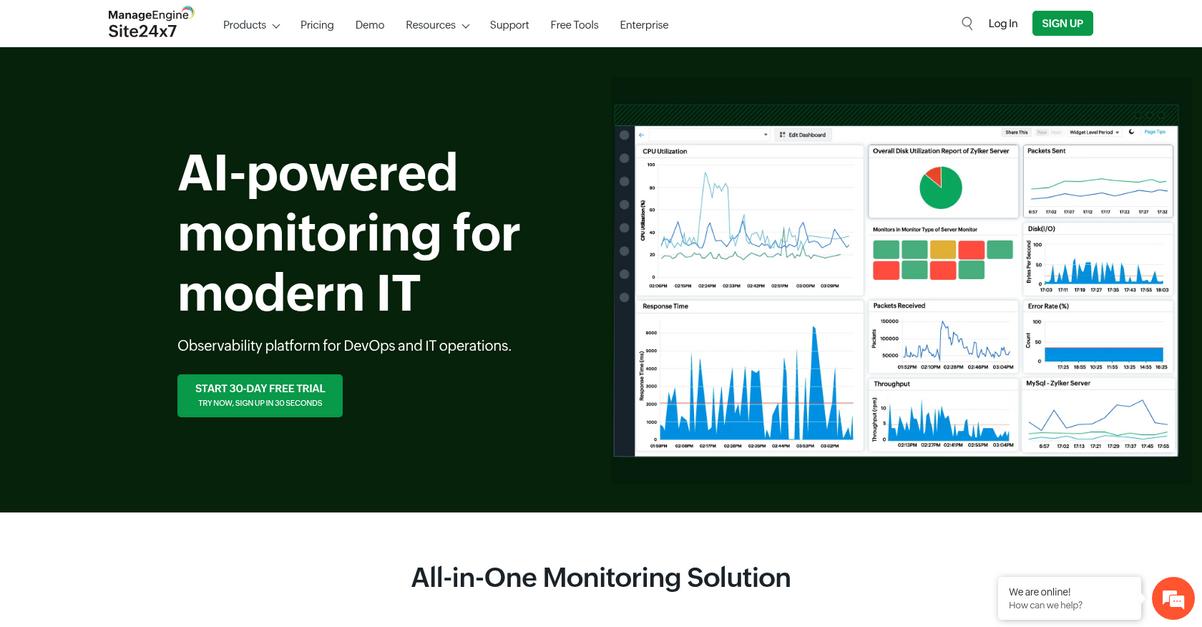
Is your database performance causing real headaches?
Site24x7 offers robust database monitoring, crucial for real-time performance analysis. This means you can pinpoint issues before they impact users.
Their platform helps identify performance bottlenecks and troubleshoot app performance on cloud and virtualization platforms. This proactive approach is vital for maintaining uptime.
Here’s a comprehensive solution.
Site24x7 delivers AI-powered monitoring for modern IT, providing an observability platform for DevOps and IT operations. This enables comprehensive visibility across your IT resources, including critical database systems.
It allows you to monitor specific application components that generate errors, ensuring you catch problems early. This includes support for various database-related application types such as Java, .NET, Ruby, PHP, and Node.js environments.
Additionally, with AIOps capabilities, Site24x7 uses AI and machine learning to detect anomalies and orchestrate incident remediation. You can also collect, consolidate, index, search, and troubleshoot issues using application logs across servers and datacenter sites.
Minimize downtime, maximize performance.
While focusing on application performance, you might also be exploring ways to streamline your IT ecosystem. My guide on application integration tools provides valuable insights.
Key features:
- Database Monitoring: Provides deep visibility into your database performance, helping identify and resolve issues quickly to prevent downtime and optimize resource utilization.
- AIOps Integration: Leverages artificial intelligence and machine learning for anomaly detection and automated incident remediation, ensuring proactive problem-solving.
- Comprehensive Log Management: Allows you to collect, consolidate, search, and troubleshoot application logs across various servers and datacenter sites for holistic insights.
Learn more about Site24x7 features, pricing, & alternatives →
Verdict: Site24x7 offers a comprehensive, AI-powered observability platform that makes it one of the best Database Monitoring Tools for IT directors and DevOps engineers. Its robust capabilities in anomaly detection, log management, and application performance monitoring ensure reduced downtime and optimized resource utilization for your SaaS infrastructure.
3. Dynatrace

Tired of database downtime and performance issues?
Dynatrace offers AI-powered observability to transform your hybrid cloud environment’s complexity into your greatest asset, addressing your database monitoring challenges. This means you can gain deep insight into your systems and data with their unified observability and security platform, ensuring your modernization initiatives align with evolving cloud adoption patterns. You’ll find your database performance optimized and resource utilization improved. Here’s how to ensure modernization initiatives align with evolving cloud adoption patterns.
Dynatrace helps you automate, analyze, and innovate faster with powerful AI. You can introduce how Dynatrace solves the problem by providing end-to-end infrastructure observability for modern multi-cloud environments, which is crucial for database health. This also includes application observability with APM, distributed tracing, and profiling for cloud-native and enterprise stacks. Additionally, it offers log analytics to drive intelligent troubleshooting and business process understanding from your log data. Plus, you get customizable business analytics to make better real-time decisions, ultimately reducing database downtime and ensuring SLA compliance. The result is unparalleled operational oversight.
If you’re also looking into business analytics, my article on best healthcare analytics software covers specific industry applications.
Key features:
- AI-powered Observability: Transform complexity into an asset with unified observability and security across multi-cloud environments, enhancing real-time performance analysis.
- End-to-End Infrastructure Monitoring: Gain comprehensive oversight of your modern multi-cloud infrastructure, including detailed database performance and resource utilization.
- Intelligent Log Analytics: Drive intuitive analytics from log data, enabling faster troubleshooting and deeper understanding of database-related business processes.
Learn more about Dynatrace features, pricing, & alternatives →
Verdict: If you’re an IT director or DevOps engineer at a mid-sized SaaS company, Dynatrace stands out as one of the best database monitoring tools. It provides granular query performance monitoring, automated anomaly detection, and clear SLA compliance reporting, as seen with customers like Air France-KLM, who highlighted its AI and prediction capabilities as a differentiator.
4. Redgate Software
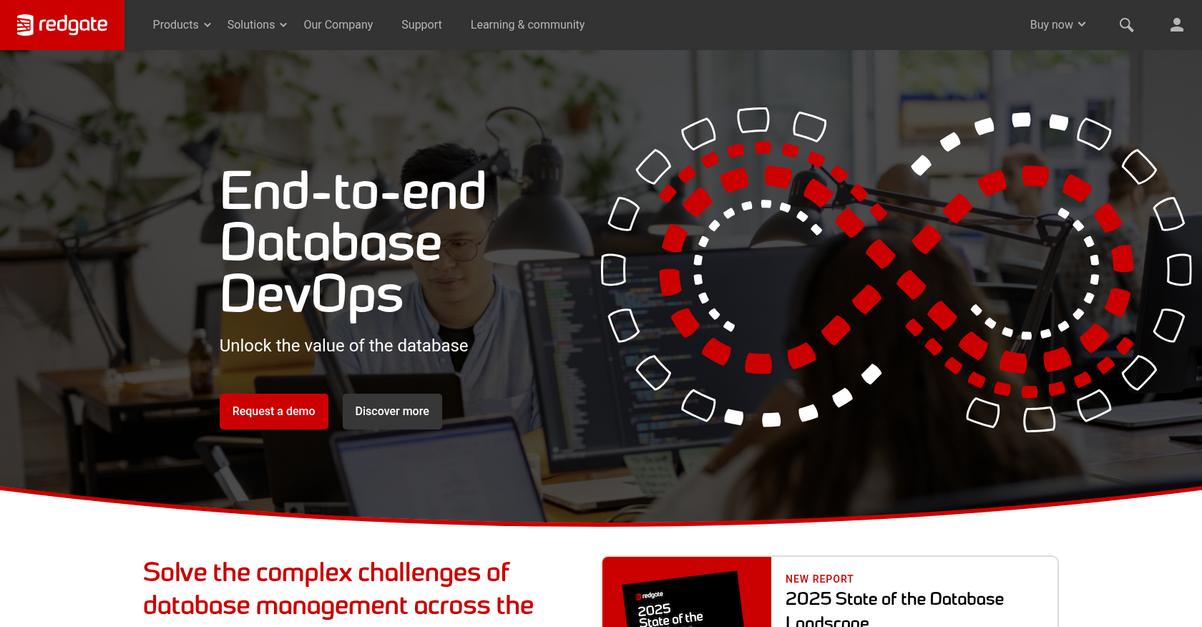
Struggling with database performance and frequent downtime?
Redgate Monitor offers instant, deep-dive analysis into server performance, connecting directly to your pain points as an IT director or DevOps engineer.
This means you can understand server performance in an instant, identifying bottlenecks and issues quickly, addressing the challenge of real-time performance analysis.
It’s time to optimize your database environment.
Redgate Monitor solves the problem of managing diverse database estates, providing a central dashboard to oversee your entire server estate, no matter where your data is hosted. This allows you to effectively monitor your cross-database, multi-platform estate and ensure optimal performance, addressing your need for granular query performance monitoring and reduced downtime.
Additionally, Redgate offers solutions to protect and automate your database processes, streamlining data provisioning, and accelerating time to market with continuous integration and delivery. This comprehensive approach means your modernization initiatives align with evolving cloud adoption patterns without compromising current workflows.
The result is optimized resource utilization and consistent performance.
While we’re discussing optimization, you might find my analysis of best price monitoring software helpful for maximizing your business profits.
Key features:
- Redgate Monitor: Provides instant, deep-dive analysis of server performance, helping you quickly identify and resolve database bottlenecks to reduce downtime.
- Centralized Monitoring: Allows you to manage your entire server estate from one dashboard, ensuring optimal performance across cross-database and multi-platform environments.
- Automated Change Management: Accelerates database development through continuous integration and delivery, streamlining workflows for faster, more accurate releases.
Learn more about Redgate Software features, pricing, & alternatives →
Verdict: Redgate Software stands out as one of the best database monitoring tools, especially with Redgate Monitor, which offers robust real-time performance analysis and centralized oversight. Its capabilities for automating database change management and protecting data streamline operations, leading to faster releases and significantly reduced downtime, benefiting IT directors and DevOps engineers.
5. Quest
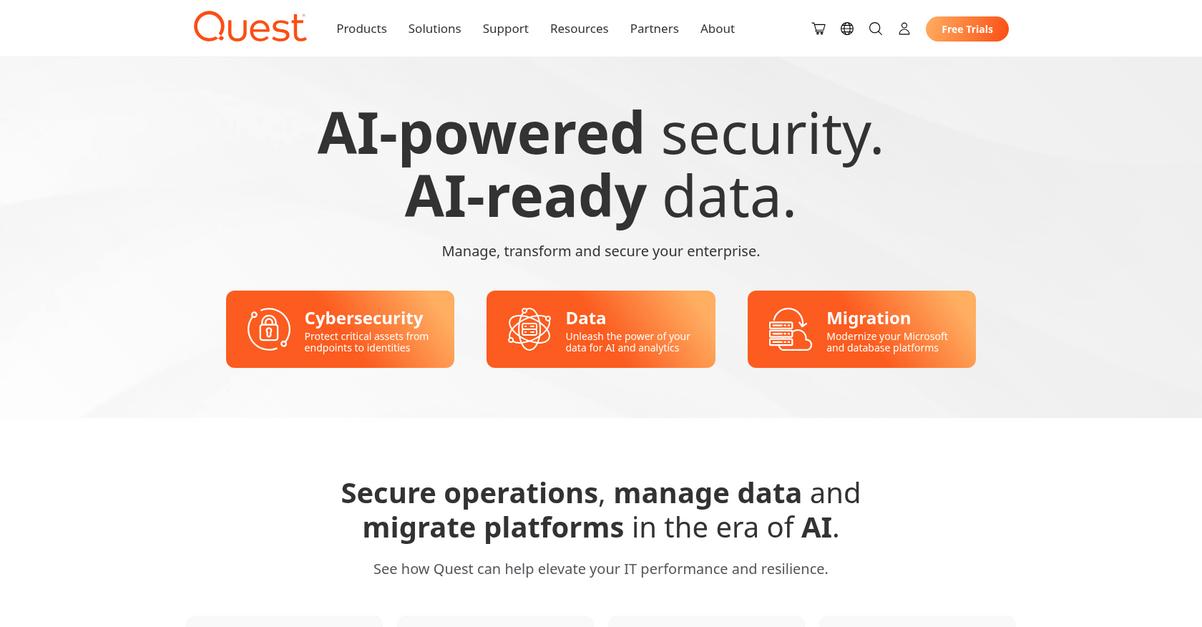
Struggling with database performance in hybrid cloud environments?
Quest’s Foglight provides database performance management for diverse environments, including on-prem and cloud. This means you can monitor and manage all your databases from a single solution, reducing complexity.
You can get granular query performance monitoring and automated anomaly detection to address critical performance bottlenecks. This capability helps cut downtime and optimize resource utilization.
Here’s how Quest helps you conquer your next challenge.
Quest offers Foglight for database performance management, simplifying complex IT operations. This tool helps you manage, modernize, and secure your business, whether your databases are on-prem or in the cloud.
The software provides database management, administration, and automation, making it easier to ensure SLA compliance. Plus, you can leverage their solutions for heterogeneous database replication for on-prem and cloud setups, which is crucial for modernization initiatives. This comprehensive support helps you achieve true IT resilience by ensuring your database platforms are always performing optimally.
The result is better resource utilization and fewer disruptions.
Key features:
- Database Performance Management: Offers comprehensive performance monitoring and management for diverse database environments, including on-premise and cloud.
- Database Administration & Automation: Provides tools for streamlined database administration, automation, and data management tasks to enhance operational efficiency.
- Heterogeneous Database Replication: Supports data replication across various database types, both on-prem and in the cloud, crucial for modernization and data availability.
Learn more about Quest features, pricing, & alternatives →
Verdict: Quest’s Foglight is one of the best database monitoring tools, providing database performance management for diverse environments. Its focus on granular query performance, automation, and support for hybrid-cloud replication makes it a strong contender for IT directors and DevOps engineers looking to reduce downtime and optimize performance.
6. Datadog

Struggling with database performance and downtime?
Datadog offers comprehensive database monitoring, delivering end-to-end visibility into your stack’s health.
This means you can pinpoint issues from infrastructure to applications, addressing the core challenges of performance analysis and integration across your environments, helping to reduce database downtime and optimize resource utilization.
Here’s how to gain clear insights.
Datadog provides Database Monitoring and Application Performance Monitoring (APM) to help you gain end-to-end visibility. This allows you to track metrics, traces, and logs from your databases and applications, essential for real-time performance analysis and proactive issue resolution.
Additionally, Datadog supports hybrid cloud monitoring, including AWS, Azure, and Google Cloud, which is crucial for addressing integration challenges and supporting modernization initiatives. You can also leverage its AI capabilities, like Watchdog, for automated anomaly detection and event management to quickly identify and address performance bottlenecks.
The integrated platform also offers observability pipelines and continuous profilers, ensuring granular query performance monitoring and unified data streams across your infrastructure. This comprehensive approach ensures you have all the tools needed to maintain optimal database health.
The result: optimized performance and reduced downtime.
Key features:
- Database Monitoring: Provides deep visibility into your database performance, helping to identify and resolve issues quickly to minimize downtime and optimize resource utilization.
- Application Performance Monitoring (APM): Offers integrated monitoring for applications, allowing you to trace requests and pinpoint performance bottlenecks impacting database interactions.
- Hybrid Cloud Monitoring and Integrations: Supports monitoring across various cloud environments and on-premises infrastructure, offering over 900 integrations for comprehensive visibility.
Learn more about Datadog features, pricing, & alternatives →
Verdict: Datadog stands out as one of the best database monitoring tools because it offers a unified platform for end-to-end observability. Its robust features, including Database Monitoring, APM, and AI-driven anomaly detection, help IT directors and DevOps engineers reduce downtime, optimize performance, and simplify complex hybrid cloud integrations.
7. New Relic
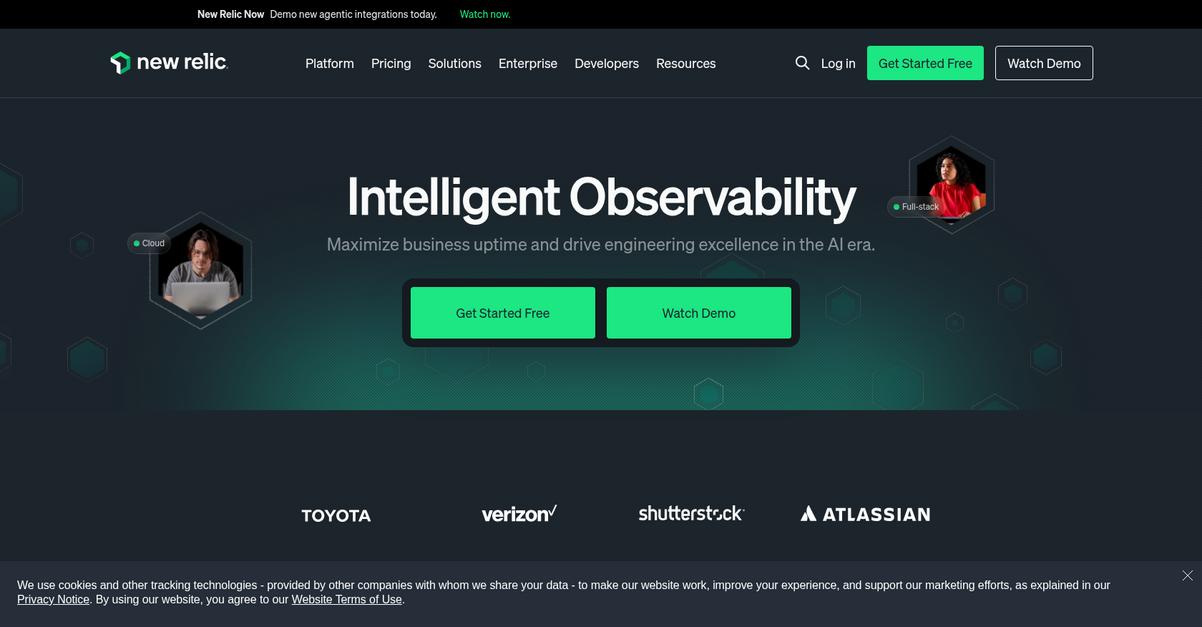
Struggling with database performance and integration headaches?
New Relic offers intelligent observability across your entire stack, helping you cut through the noise. This means you can resolve issues 5x faster with intelligent transaction observability.
You can focus on the data and stack that matter most, moving from reactive troubleshooting to proactive problem solving for your database and broader infrastructure.
Discover how to maximize business uptime today.
New Relic provides 50+ capabilities in one platform, giving you a full-stack view of your operations, from front end to infrastructure. This includes robust database monitoring, so you can pinpoint issues swiftly.
You get comprehensive visibility through features like Database Monitoring and Logs, ensuring you understand performance across hybrid cloud environments. This helps you identify and fix granular query issues, automate anomaly detection, and improve resource utilization.
Additionally, with over 780 integrations, including for MySQL, you can consolidate tools and unify your team’s view, leading to greater engineering excellence and reduced downtime for your critical databases.
Ultimately, this empowers you to scale effectively.
Key features:
- Intelligent Transaction Observability: Resolve issues up to 5x faster by focusing on the data and stack that matter most.
- Database Monitoring and Integrations: Gain insights into database performance with dedicated monitoring and 780+ integrations, including MySQL.
- Full-Stack Visibility: Monitor your entire stack, from front end to infrastructure, ensuring comprehensive performance optimization.
Learn more about New Relic features, pricing, & alternatives →
Verdict: New Relic stands out among the best database monitoring tools by offering intelligent, full-stack observability. It’s well-suited for IT directors and DevOps engineers seeking granular query performance monitoring and automated anomaly detection, helping reduce downtime and optimize resource utilization effectively for mid-sized SaaS companies.
8. AppDynamics
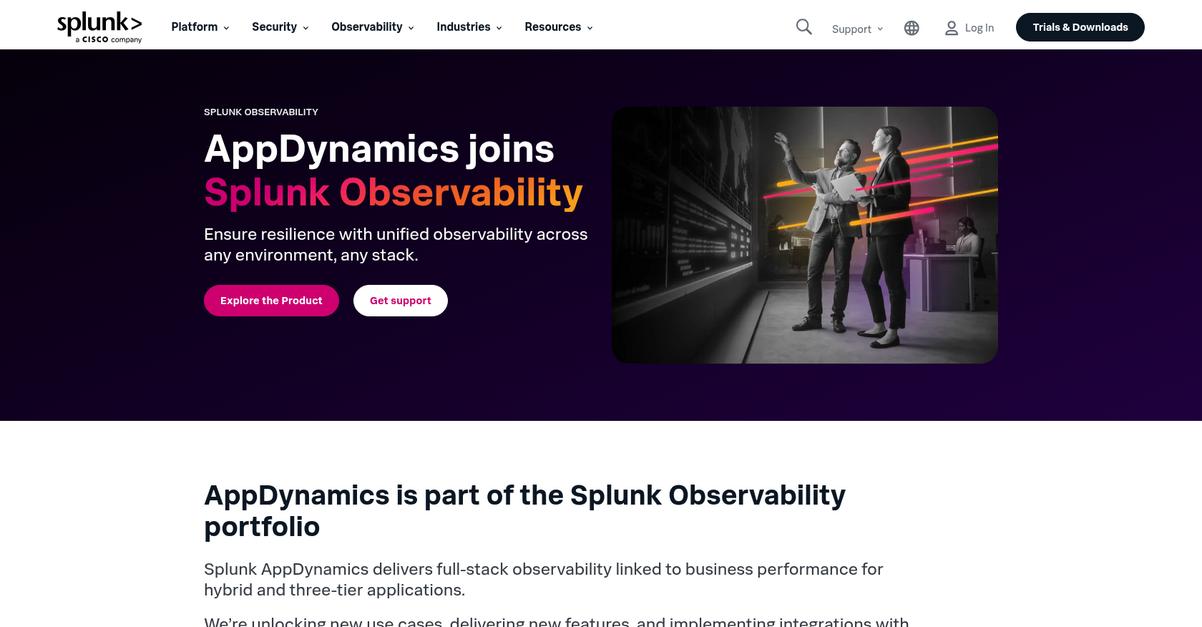
Experiencing database performance issues?
AppDynamics offers unified observability to detect, diagnose, and resolve issues, keeping your apps and business running smoothly. This means gaining visibility across any environment, any stack.
You can gain better control of your data and costs, with proactive detection and investigation of issues sooner.
Here’s how AppDynamics helps.
AppDynamics provides full-stack observability for hybrid and three-tier applications, directly linked to business performance. This allows you to gain visibility to pinpoint problems impacting your operations and troubleshoot faster.
You can optimize cloud monitoring and improve end-user experiences, leveraging unique capabilities like application performance monitoring tied to business metrics and your network. Additionally, it helps you reduce alert noise by consolidating and correlating events.
Additionally, AppDynamics integrates with other Splunk products, like Splunk Observability Cloud and IT Service Intelligence, bringing AI-powered capabilities to accelerate troubleshooting. This allows you to centralize log analytics, reduce alert noise, and align IT service health with your key business indicators, all without needing to migrate your existing systems.
The result: less time in war rooms.
Beyond monitoring, securing your data is crucial. My guide on best database backup software can help you protect your information and ensure business continuity.
Key features:
- Full-stack observability: Gain unified visibility across traditional and modern applications, including on-prem, private cloud, and public cloud environments.
- Business performance linkage: Connect application performance monitoring to your critical business metrics, network, ISP, API, and service dependencies for holistic insights.
- AI-powered insights: Leverage AI to accelerate troubleshooting, reduce alert noise, and streamline workflows by grouping related alerts from various sources.
Learn more about AppDynamics features, pricing, & alternatives →
Verdict: AppDynamics is one of the best database monitoring tools for IT directors and DevOps engineers seeking granular performance insights and automated anomaly detection for hybrid and three-tier applications. Its full-stack observability and AI-powered troubleshooting can significantly reduce downtime.
9. Icinga

Is database downtime a recurring nightmare for you?
Icinga offers robust infrastructure monitoring to observe your entire IT and specifically your database, providing a unified view. This means you can track availability, performance, and trends to know the state of everything at all times. It helps you tackle monitoring challenges and proactively solve problems.
You need a solution that simplifies operations.
Icinga helps you monitor private, public, or hybrid cloud environments all in one system, keeping you independent of any single cloud provider. This allows you to collect, store, visualize, and combine performance and metrics data, getting alerted on patterns that indicate issues. Additionally, Icinga offers analytics to discover relations and patterns in your data, helping you create reports and gain dedicated insights for proactive performance optimization. Plus, you get notifications through any channel you want, ensuring you react to incidents with confidence. The result is comprehensive monitoring across devices, databases, and applications.
Speaking of optimizing performance and supporting your team, my guide on best virtual PBX systems might be helpful for improving communication.
Key features:
- Infrastructure Monitoring: Observe your entire IT, including databases, networks, and servers, providing insights into availability, performance, and trends for flexible scaling.
- Monitoring Automation: Manage massive amounts of monitoring objects through automation, simplifying the import and synchronization of data from various sources for efficient workflows.
- Metrics & Logs and Analytics: Collect, store, visualize, and combine performance metrics and log data, allowing you to recognize trends, get alerted on patterns, and create reports for proactive analysis.
Learn more about Icinga features, pricing, & alternatives →
Verdict: Icinga stands out as one of the best database monitoring tools, providing IT directors and DevOps engineers with a scalable, highly available solution. It helps reduce complexity and optimize resource utilization by offering comprehensive monitoring, automated anomaly detection, and granular query performance analysis to ensure your modernization initiatives align with cloud adoption.
Conclusion
Database downtime doesn’t have to happen.
Choosing the right tool in a crowded market is tough. It’s easy to get lost in conflicting vendor claims and complex feature lists for your startup.
While outages are common, Uptime Institute reports that only 9% of data center outages were severe in 2024. This shows that proactive monitoring makes a huge difference in preventing the most catastrophic failures for your organization.
Here’s my top recommendation.
From my experience, ManageEngine is the clear winner. Its powerful observability and IT management capabilities are perfect for handling complex hybrid cloud environments.
I was especially impressed by its AI-powered analytics that help your team proactively fix issues before they escalate. It’s one of the best database monitoring tools for truly reducing downtime.
I recommend you start a free trial of ManageEngine to see how it can directly impact your infrastructure’s stability.
You’ll gain control over your IT.






